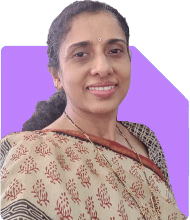72-Year-Old Retiree with 10 Lakhs Savings: What Should I Do?
Ramalingam Kalirajan |9854 Answers |Ask -Follow
Mutual Funds, Financial Planning Expert - Answered on Jul 27, 2024
He has an MBA in finance from the University of Madras and is a certified financial planner.
He is the director and chief financial planner at Holistic Investment, a Chennai-based firm that offers financial planning and wealth management advice.... more

I am retired and have 10 lakhs saving and my age is72 please advise
Assets Overview
Savings: Rs. 10 lakhs
Age: 72 years
Income Generation Strategies
Fixed Deposits (FDs)
Consider putting a portion of your savings in a Fixed Deposit.
It offers a stable and predictable interest income.
Choose a bank or financial institution offering competitive rates.
Senior Citizen Savings Scheme (SCSS)
This scheme is specifically designed for senior citizens.
It offers attractive interest rates and regular income.
The scheme has a tenure of 5 years, extendable by 3 years.
Monthly Income Scheme (MIS)
Post Office Monthly Income Scheme can be a good option.
Provides a fixed monthly interest payout.
Offers safety and reliability as it is backed by the government.
Mutual Fund Systematic Withdrawal Plan (SWP)
Invest a portion in conservative mutual funds.
Set up a Systematic Withdrawal Plan for regular income.
This provides market-linked returns with some risk exposure.
Creating a Balanced Portfolio
Allocation Suggestions
Fixed Deposits and SCSS: Rs. 4 lakhs
Split between Fixed Deposits and Senior Citizen Savings Scheme.
Provides regular and predictable income.
Monthly Income Scheme (MIS): Rs. 3 lakhs
Invest in Post Office Monthly Income Scheme.
Offers monthly interest payouts.
Mutual Funds (SWP): Rs. 3 lakhs
Choose conservative mutual funds.
Set up a Systematic Withdrawal Plan.
Emergency Fund
Keep a small portion liquid for emergencies.
Could be in a savings account or a short-term fixed deposit.
Monitoring and Adjusting
Regular Review
Review your investments annually.
Adjust based on changes in interest rates or personal needs.
Consulting with a Certified Financial Planner
Regularly consult with a certified financial planner.
Get personalized advice based on changing financial needs.
Final Insights
Diversify investments to ensure a steady income stream.
Balance safety with some exposure to market-linked returns.
Regularly review and adjust your financial plan.
Best Regards,
K. Ramalingam, MBA, CFP,
Chief Financial Planner,
www.holisticinvestment.in
You may like to see similar questions and answers below
Ramalingam Kalirajan |9854 Answers |Ask -Follow
Mutual Funds, Financial Planning Expert - Answered on Jul 10, 2024
Ramalingam Kalirajan |9854 Answers |Ask -Follow
Mutual Funds, Financial Planning Expert - Answered on Aug 13, 2024
Ramalingam Kalirajan |9854 Answers |Ask -Follow
Mutual Funds, Financial Planning Expert - Answered on Jan 23, 2025
Ramalingam Kalirajan |9854 Answers |Ask -Follow
Mutual Funds, Financial Planning Expert - Answered on Jun 03, 2025
Radheshyam Zanwar |5830 Answers |Ask -Follow
MHT-CET, IIT-JEE, NEET-UG Expert - Answered on Jul 26, 2025
Dr Deepa Suvarna |163 Answers |Ask -Follow
Paediatrician - Answered on Jul 26, 2025
Radheshyam Zanwar |5830 Answers |Ask -Follow
MHT-CET, IIT-JEE, NEET-UG Expert - Answered on Jul 26, 2025
Radheshyam Zanwar |5830 Answers |Ask -Follow
MHT-CET, IIT-JEE, NEET-UG Expert - Answered on Jul 26, 2025
Radheshyam Zanwar |5830 Answers |Ask -Follow
MHT-CET, IIT-JEE, NEET-UG Expert - Answered on Jul 26, 2025
Radheshyam Zanwar |5830 Answers |Ask -Follow
MHT-CET, IIT-JEE, NEET-UG Expert - Answered on Jul 26, 2025
Nayagam P P |9447 Answers |Ask -Follow
Career Counsellor - Answered on Jul 26, 2025
Nayagam P P |9447 Answers |Ask -Follow
Career Counsellor - Answered on Jul 26, 2025
Anu Krishna |1655 Answers |Ask -Follow
Relationships Expert, Mind Coach - Answered on Jul 26, 2025
Nayagam P P |9447 Answers |Ask -Follow
Career Counsellor - Answered on Jul 26, 2025






















